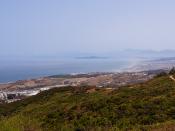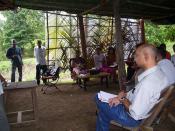Introduction
In July 1936, the popular movement that contained the military and right-wing uprising in Spain triggered one of the most profound social revolutions of the twentieth century. The period that began on 19 July 1936 and ended in August 1937 with the destruction of the revolutionary AragÃÂn collectives by communist-led republican military forces was one of profound and extended freedom and democracy in the management of social life, work and the economy. The history of the Spain of 1936-7 demonstrates the fate of a revolution that attempted to create a genuinely autonomous society, but did not make a complete break with those bodies that are inherently given to control and manipulation - the state, the political parties and the unions. In other words, the Spanish anarchist movement of the time failed to clarify its radicalism and to pursue the logic of its principles. Why did this happen? How did the republican parties re-establish the authority both of the Catalan regional government and of the central government in Madrid? What brought about the ultimate ascendancy of the Communist Party under the premiership of Juan Negrin?
A key factor in understanding this is the slogan, 'First the war, then the revolution.'
This phrase was cynical when it was used by not only by the republicans, socialists and communists, who never wanted a popular revolution anyway, but also by those anarchists who were so far removed from the people that they no longer identified with them.
More dangerously, though, the slogan was ingenuous when it was mouthed by many other, entirely committed anarchists, because it obscured the reality that a war is a very political phenomenon, and that how it is fought is determined by political alignments.
First published in Great Britain 1998 by The Meltzer Press, PO Box 35, Hastings, East...


